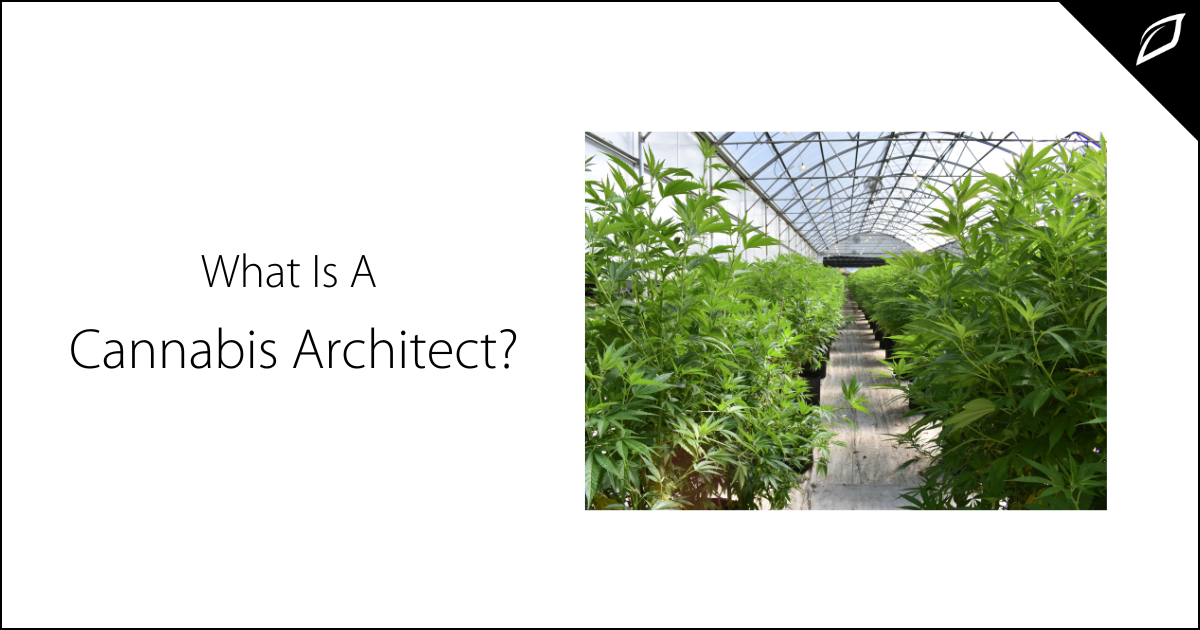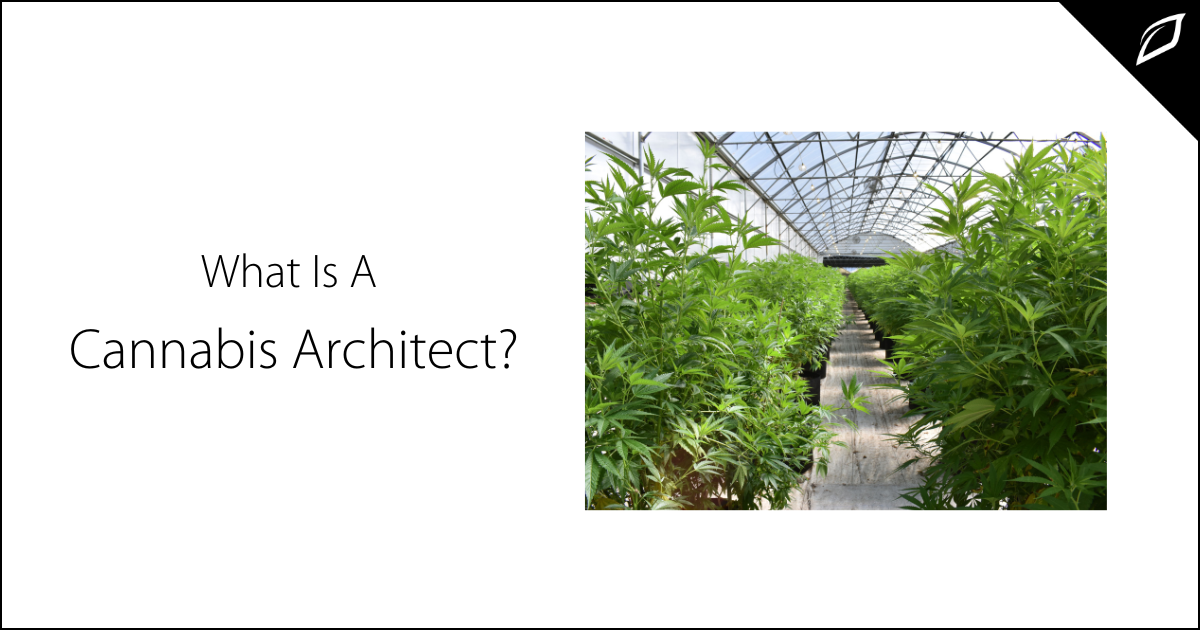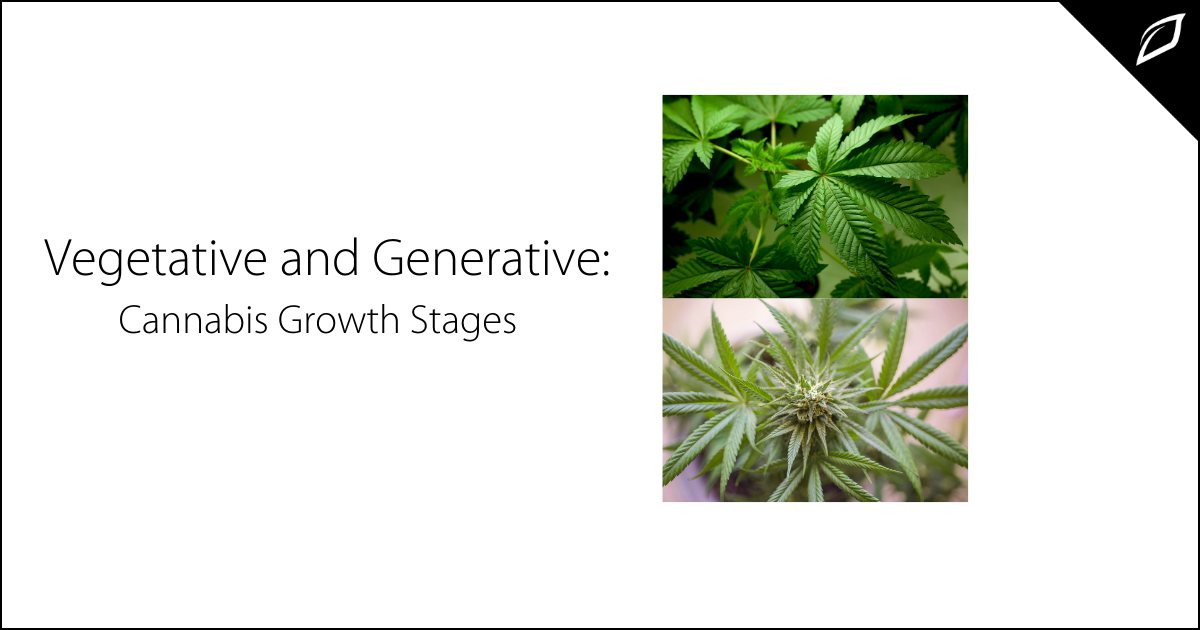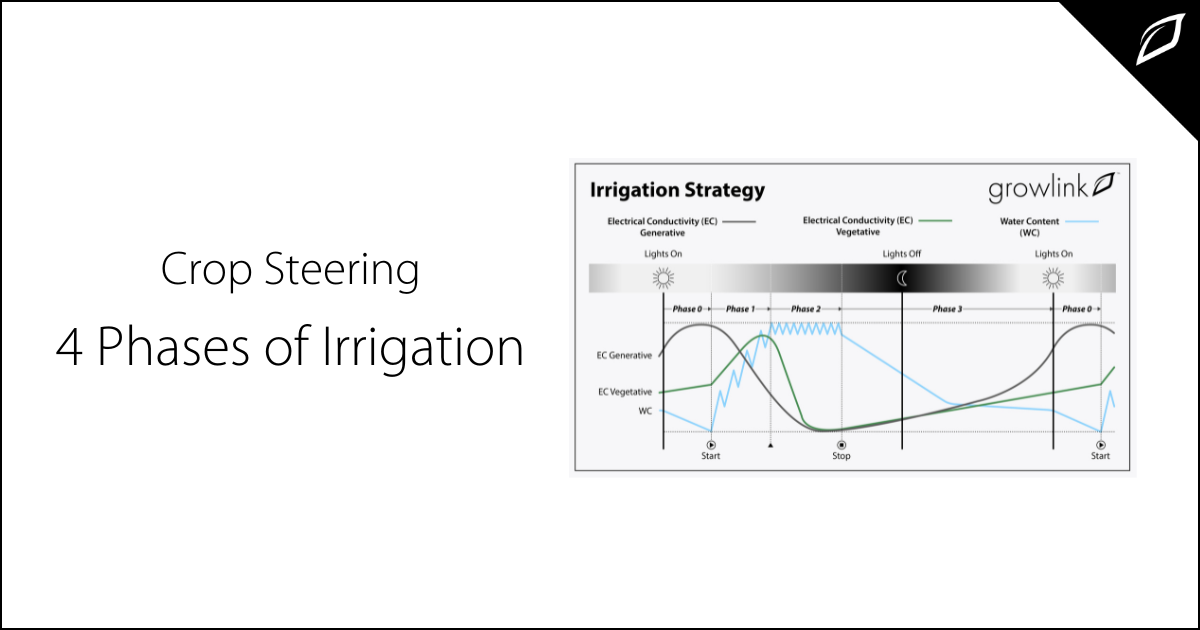Vegetative and Generative: Cannabis Growth Stages
With the popularity of crop steering, which manages plant growth by adjusting environmental factors and/or irrigation to encourage a crop's desired...
5 min read
Joy King : Sep 19, 2022 2:57:07 PM

Cannabis cultivation facility planning and design are challenging. All building planning and design can be difficult, but there are considerable cannabis-specific concerns; zoning laws, building codes, special permits, and waste management requirements can bring any project to a halt if not handled properly. Each grow operation is distinctive, and no two building projects are the same - which is why hiring an expert could be the difference between success and failure. So what exactly is a cannabis architect, and what do they do? Let's dig in.
What is a cannabis architect?
A cannabis architect is a professional with the proper education, training, knowledge, experience, and vision to guide you through the entire design, planning, and building process of your project. Architects specializing in cannabis will assist you in defining how you want to grow and then shape a custom plan that fits your unique, specific requirements.
Architects understand the big picture allowing them to orchestrate structural, mechanical, electrical, and plumbing engineers and contractors to manage thousands of details. A building requires multiple projects that are often happening at the same time. Having the peace of mind that a highly qualified expert provides allows you to prioritize other factors of your business while leaving complex facility planning and design to the experts.
What do Cannabis Architects do?
A cannabis architect will manage every phase of your facility's design, planning, and construction. Including hiring qualified engineers and contractors, sourcing materials, and acting as your liaison with city and state regulators regarding permits, zoning laws, resource management, and other regulations you may not be familiar with. Here's a closer look at some top ways a cannabis architect can make your life easier.
Permits & Zoning
A qualified cannabis architect will understand your project's required permits, zoning restrictions, and requirements. State and city ordinances differ widely depending on where you are. Zoning for cannabis-focused businesses typically mandates buffer zones between educational and religious institutions and other cannabis facilities. Your cannabis architect must address these concerns with city officials before approvals and permits are issued. Construction only begins with approval from various city and state authorities. Once you've approved the design, the drawings still need to be submitted for scrutiny by inspectors and commissioners. This process will be far easier to manage when you have the right team working on your behalf.
Security
Cannabis facility security is a huge concern for your business. Beyond the obvious door locks, video surveillance, and alarm systems, ensure your architect plans for adequate wiring for a robust cyber security plan. Consider who should have access to which areas of the facility, how frequently they must check in with security, who they are allowed to interact with, and what personal items are permitted on the premises. Planning now will save hours of frustration if you need to add or change something after completing your build.
Waste Management
Almost 60.000 tonnes of waste, including substrate and plant matter, are produced annually by indoor, greenhouse, and outdoor facilities that cultivate cannabis. Growers dispose of their waste in many ways, such as composting, landfills, and recycling facilities, but the lack of specific government guidance leaves producers with limited options.
Many jurisdictions require cannabis waste to be unusable and unrecognizable before disposing of it but do not specify what that means. Grow operations must dispose of waste, but without explicit rules in place, producers are often forced to create ways to recycle. Regardless of local regulations, it would be best to consider sustainability when planning your facility. Produce as little waste as possible, making your business as eco-friendly as possible.
Government agencies take the tagging and tracking of cannabis plants from seed to waste products seriously, meaning that waste management areas for a grow facility must be up to code and under some form of video surveillance at all times.
CEA or Controlled Environment Agriculture
Depending on your state's regulations, you may be required to grow indoors or in a greenhouse? utilizing CEA or controlled environment agriculture. According to Wikipedia, Controlled-environment agriculture is a technology-based approach to food and crop production. CEA aims to protect plants from outdoor elements like inclement weather and pests while maintaining optimal growing conditions during crop development.
Greg Stone is the VP of CEA and Greenhouse Solutions at BFG Supply and DeCloet Manufacturing, an industry leader with over 50 years of experience. We sat down to get his perspective on how they assist cannabis growers during this crucial process. "There are a lot of decisions to be made around controlled environment equipment. From lighting to irrigation, monitoring, and automation software, it's a lot to consider. We have strong relationships with the industry's most trusted and experienced manufacturing partners to offer our clients diverse options in how they set up their growing environment." Greg commented.
Mr. Stone continued, "It's a process, and assembling the right team is important. We are often with our clients from early-stage design thru crop protection program building and fertilizer selection. Everyone is working towards a common goal in surpassing our client's expectations." Before working as the VP of CEA and Greenhouse Solutions for BFG Supply, Greg was a professional grower in ornamentals, so he understands their client needs.
Greenhouses & Ventilation
While some jurisdictions require indoor crop cultivation, some require outdoor growing. To protect crops from wildlife, theft, and harsh weather conditions, many utilize greenhouses or hybrid greenhouses to comply with the law and protect healthy cannabis plants.
The greenhouse ventilation system is pivotal in plant health and crop production. It's easy to overlook slow growth, low yields, or problems with pests or disease to an inadequate greenhouse ventilation system. Your architect will ensure adequate ventilation to keep temperatures down in summer and up in winter. Not only is ventilation vital to maintaining environmental conditions, but they also directly affect a plant's ability to achieve photosynthesis, uptake nutrients, and complete reproductive cycles. Greenhouse ventilation systems serve four crucial functions: temperature control, humidity control, CO2, and air circulation.
Another factor when designing your growing space in a greenhouse is shades. Retractable shades will assist in increasing or decreasing inside temperatures. Greenhouse shading protects against solar radiation, can alter the environment, and expand the growing season in harsh weather conditions. Solar energy impacts plant leaves by converting them to heat energy, raising air, leaf, and soil temperatures. Utilizing shade in the middle of the summer can lower leaf temperature by 10 degrees F (6 degrees C) or more.
Lighting and Electrical
Energy efficiency for your cultivation facility must be a top priority for the building's functionality and design. Between the lighting, dehumidifiers, HVAC, and thermostat control, architects should put immense effort into the energy efficiency of your facility.
Growing cannabis indoors gives you much more control over the environment and, therefore, the finished product. Still, the costs of covering the electricity demand for indoor cannabis growers can be astounding. All the ventilation, dehumidification, air conditioning, and irrigation require massive amounts of electricity. The lighting and electrical systems you choose for your grow facility majorly affect your costs and monthly energy expenses.
Going Green
Here are some other things to consider to become an eco-friendly company. There is in an ever-increasing demand for sustainability in business. The Washington Examiner recently posted an article where members of the GOP are demanding environmental impact studies to understand how cannabis legalization may affect the use of resources and energy infrastructure. Here are a few additional options to ask your cannabis architect about:
Solar Power
If the cannabis industry is serious about sustainability, it must embrace the opportunities offered by renewable energy. Solar energy, in particular, could make a notable difference in how cannabis facilities impact the environment. Some states have passed and implemented laws requiring facilities to adopt renewable energy sources, like solar. And with solar becoming increasingly affordable to implement, it can help put less strain on electric bills.
Rainwater Collection
Rainwater harvesting is collecting and storing rainwater to reuse for on-site purposes. Allowing people to collect rainwater on their properties reduces demand from water facilities and improves community conservation efforts.
Cannabis plants are notoriously thirsty, drinking up to 23 liters of water a day. Depending on state law, cultivation facilities can gather, store, and use rainwater on their plants. This is useful during droughts when residents must reduce public water use.
Architects can design a rainwater collection feature into a building that is easy to maintain and captures as much rain as possible. But make sure you and your architect do your homework. Collecting rainwater is legal in most states but may be illegal in a particular county or city or may have restrictions on the amount or way it's collected and stored. Education will avoid creating a system that doesn't adhere to local regulations.
Final Thoughts
Every cannabis architect has personal characteristics and techniques. Finding someone who understands your requirements, budget, and needs is important. Consider your business goals and your building necessities. Reach out to several architects and begin a conversation. Don't worry if you don't have all the answers – the right architect will help you clarify your goals, and objectives and create an agreed upon timeline.


With the popularity of crop steering, which manages plant growth by adjusting environmental factors and/or irrigation to encourage a crop's desired...

Crop steering manipulates a plant's environment and root zone to influence metabolic/hormonal changes that inspire vigorous growth and greater...
.png)
While the presidential election has been fraught with accusations, protests, and celebrations, let's examine some of the more compelling outcomes...